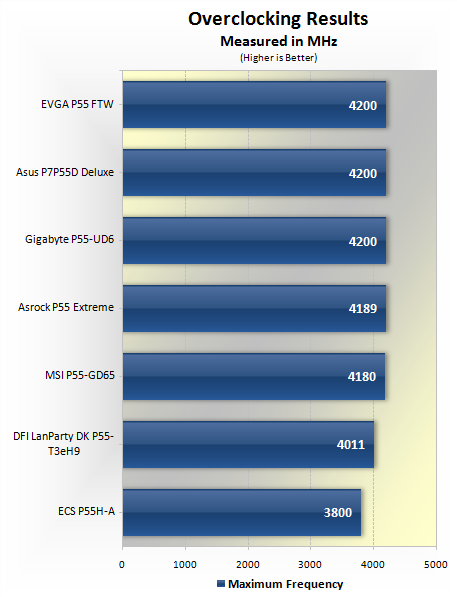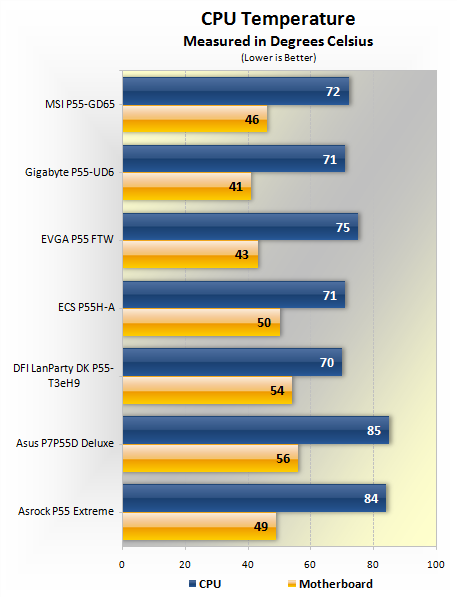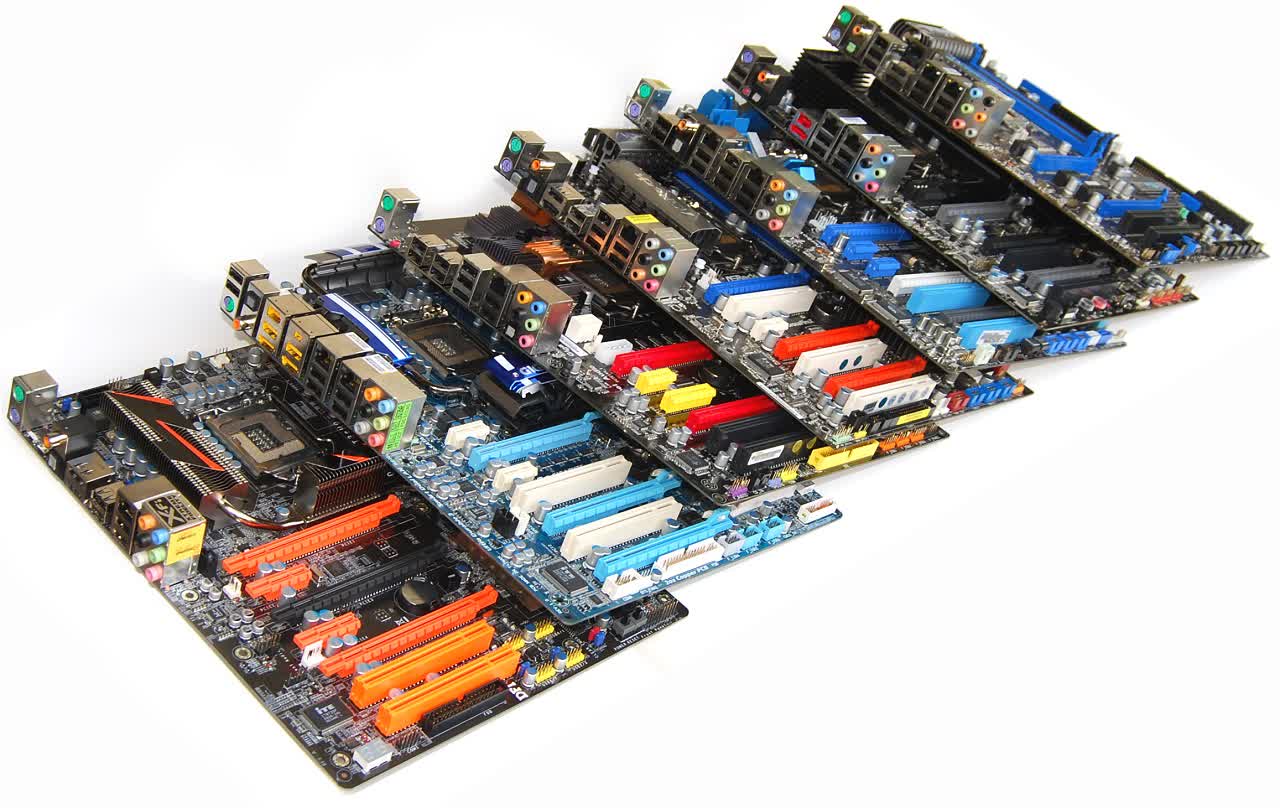Overclocking Performance

Now to separate the men from the boys, it's overclocking time!
Using a little over 1.5v of power and the Noctua NH-U12P SE2 CPU cooler, our Core i5 750 processor appeared to be limited to 4.20GHz, almost a 60% overclock. The EVGA P55 FTW, Asus P7P55D Deluxe and Gigabyte P55-UD6 motherboards all reached this milestone.
The Asrock P55 Extreme was impressive despite just falling short at 4189MHz. The MSI P55-GD65 was also close reaching just 4180MHz.
The biggest disappointment came from DFI LanParty DK P55-T3eH9 that maxed out at 4011MHz, while we were pleasantly surprised to find the affordable ECS P55H-A capable of a 3800MHz overclock.
Although we didn't spend endless hours trying to squeeze every last MHz out of each board, we gave each model a fair amount of time to achieve its best overclock. Some boards like the EVGA P55 FTW and DFI LanParty DK P55-T3eH9 required much more fine tuning compared to boards such as the Asus P7P55D Deluxe and Gigabyte P55-UD6.

Now for a quick look at the CPU load temperatures and motherboard temperatures when overclocked. For this test we no longer used the Intel stock cooler but the Noctua NH-U12P SE2.
The Asus P7P55D Deluxe reported a load temperature of 85 degrees using its auto-regulated voltage setting. Though not reaching the same frequency, the Asrock P55 Extreme operated the Core i5 750 processor at almost the same temperature.
The Asus P7P55D Deluxe also reported the highest motherboard temperature reaching 56 degrees. Although the EVGA P55 FTW reached the same 4.20GHz overclock it reported a CPU load temperature of just 75 degrees, which is 10 degrees lower than the Asus, while the motherboard itself was 13 degrees cooler.
Again these are perhaps not the most scientific results but they are nonetheless interesting.
